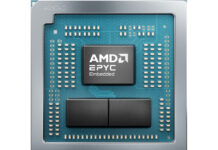As some readers know, a big reason for the slow content on the site is that I am busy writing a big piece on Intel vPro technology for a very big technology review site. As part of this, one thing I realized is that Intel’s current model of offering it only with specific chip sets and its mid to high end CPUs is quickly becoming obsolete.
For those that do not know, vPro is basically a collection of features which are aimed at the business segment in terms of both security and desktop/ notebook management. Some very cool features come from this such as the Intel AMT 7.0 pre-boot KVM-over-IP features that are similar to IPMI 2.0 KVM-over-IP but use out of band on a single NIC alongside what is essentially a VNC server.
Specifically, one basically wants to use a C206 or Q67 chipset to get this functionality or a mobile counterpart. What Intel does not do is support these features on its Atom line at present. This has to change.
Corporations are increasingly allowing employees and contractors to use iOS and Android based devices. In what I see consulting for a big firm and with clients and other firms is that the old BlackBerry plus Windows support model is quickly becoming extinct. These devices, of course, generally run on ARM Holdings based architectures, not Intel’s.
If Intel moves the Atom into corporate phones and tablets, the next logical step is to move vPro plus solutions from the McAfee acquisition to those devices, and therefore the Atom. One security and management infrastructure is a powerful selling point.
The risk to Intel in this is that the Atom is able to already pass as a basic PC and is plenty to boot a RDC session and run a virtual desktop session. In the future, it can do so with lower power consumption and therefore Intel faces cannibalizing sales of desktop/ notebook CPUs with the low-end Atom CPUs.
Conclusion
Overall, Intel finds itself in an interesting pickle. On the other side, AMD lacks the same vPro plus McAfee package Intel now possesses. AMD also, by focusing on the low cost per unit segment, is most vulnerable from ARM sales creeping into the traditional notebook and desktop segments. On the other hand, it will be interesting to see if another security firm works with ARM to provide a similar hardware based security and management framework which would be a big win for whatever firm can move into that space.



